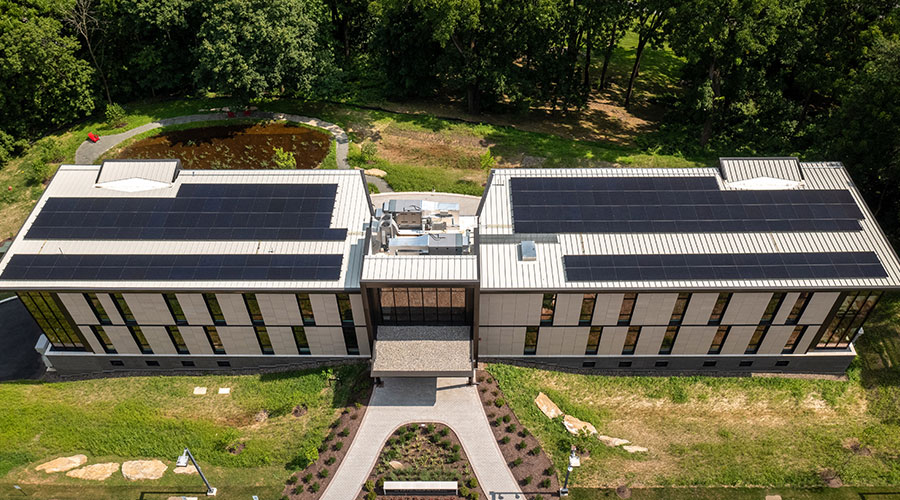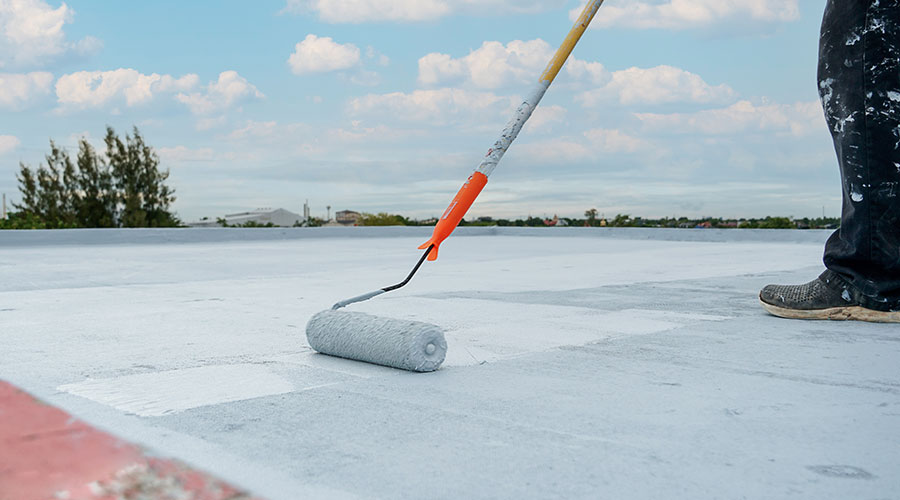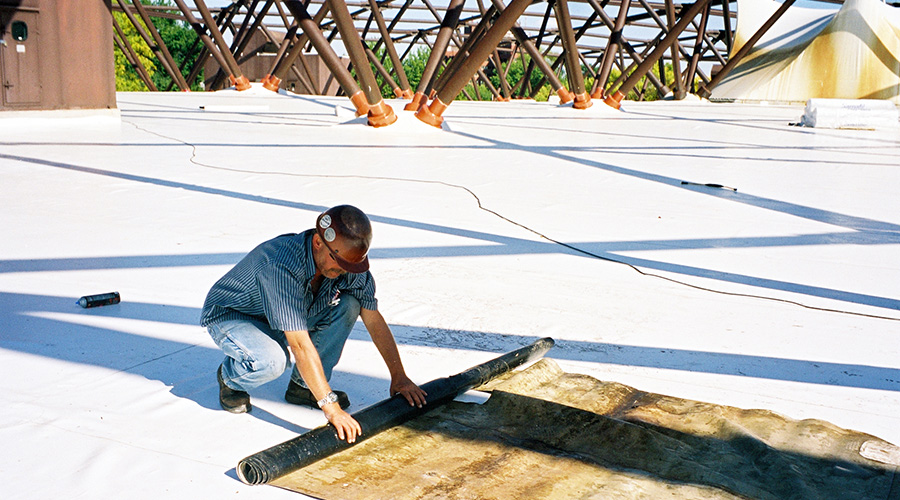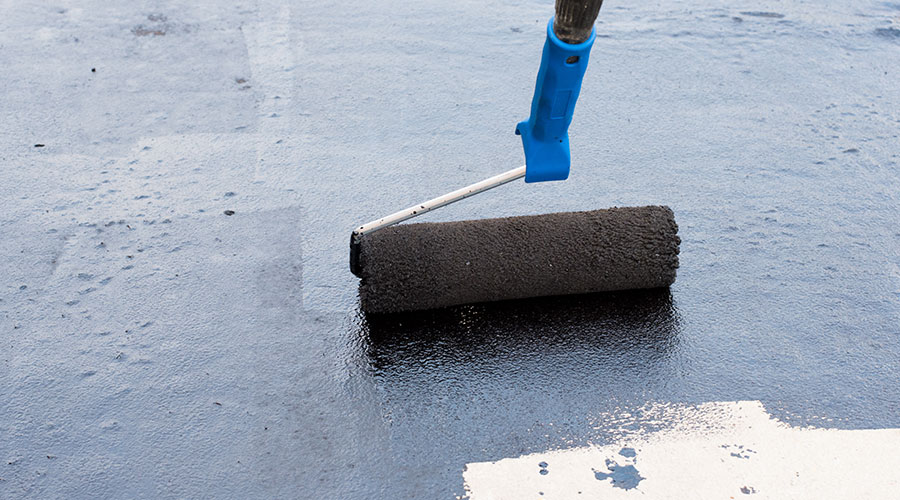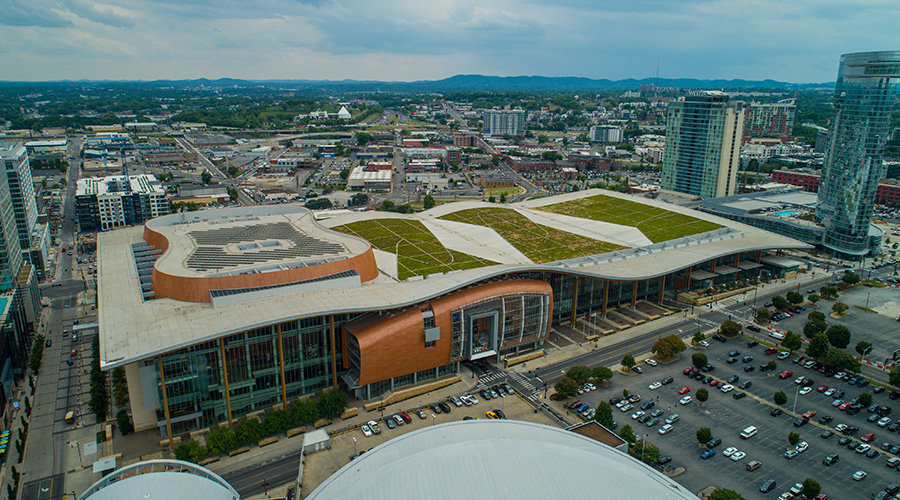College Commons Metal Roofing Project Supports Sustainable Design
Metal roof anchors award-winning green design for Muhlenberg College’s new academic building.
Muhlenberg College’s newest academic building — Fahy Commons for Public Engagement and Innovation — sets the standard for sustainable design at a college well known for its sustainability programs.
Every detail of the $13.2 million building, completed in 2023, from the energy-saving heat and water systems and sustainable building materials to the roof itself, reflects the Allentown, Pennsylvania, college’s commitment to sustainability.
The building, designed by Re:Vision Architecture, sits on the former site of the Sigma Phi Epsilon fraternity house, a property the college purchased in 2019. Rather than renovating the existing structure, the college chose to build a new facility to house classrooms, conference spaces, offices and flexible study areas, while adhering to the highest sustainability standards.
“The later you decide to be sustainable, the more difficult and costly it becomes,” says Richard Waligora, capital projects manager, plant operations at the college since 2019. “We decided to start at the concept design level, which made the path toward sustainability a whole lot easier.”
Going solar
A striking metal roof crowns the building, blending sustainability and performance for the 20,000-square-foot, LEED Platinum, Living Building Challenge Core and Passive House certified structure.
Waligora says a metal roof was the most sustainable choice. Metal roofs are durable, low-maintenance, long-lasting and fully recyclable at the end of their lifespan.
Choosing a metal roof also made it easier and more cost-effective to install a 73kW rooftop solar array, which generates renewable energy to support the building’s net-zero goals. But Waligora emphasizes, “We would have gone with a metal roof with or without the solar panels.”
He says that Muhlenberg College follows the principle of “long life, loose fit,” meaning the building’s use may evolve over time, and today’s design must accommodate future changes.
“A standing-seam metal roof has about a 50-year life expectancy,” he says. “The long life was the reason we chose metal. It worked out really well because it made it easier to attach 182 solar panels to it.”
ATAS International supplied 24-gauge steel, 2-inch Field-Lok standing seam metal roof panels, each 15 and a quarter-inch wide, for the Fahy Commons roof. Over these durable panels, crews installed a solar array to integrate renewable energy with high-performance roofing.
Standing seam metal panels are becoming increasingly popular on commercial and institutional buildings with rooftop solar systems because of their durability and easy installation. The long, vertical panels are laid over a protective underlayment, then mechanically sealed to lock them together to prevent water infiltration.
These metal roofs offer another major benefit: they make installing solar panels easy and more cost-effective. Solar panels are clamped to the standing seams, eliminating roof penetrations.
Metal roofs can also enhance a building’s energy performance. Today’s metal panels use “cool pigments” in their paint systems, which are pigments formulated to reflect sunlight and reduce heat absorption. For this project, the college selected a lighter sandstone color, helping to lower cooling loads and increase comfort within the building.
Before cool pigments were used, metal panels would heat up and transfer heat into a building, which increased cooling loads. Cool pigments reflect the sun’s rays, keeping them from heating up the building.
The cooler color used in Fahy Commons also helps the solar panels perform better. If a darker color had been used, some of the heat would have been reflected under the solar panels, affecting the amount of energy they were able to capture.
Long-term value
While standing seam metal roofs can be more expensive upfront — typically two to three times the cost of asphalt shingles or membrane roofing — the investment pays off over time, according to Waligora.
“If facility managers are looking for a long-term roofing solution, this is one of the longest performing solutions out there,” he says.
With a lifespan of longer than 50 years, metal roofs offer long-term, low-maintenance protection. The solar array adds another layer of sustainability and long-term value, protecting the metal panels from wear and tear while generating renewable energy. Furthermore, those with solar panels on top wear less because the panels provide added protection.
The roof’s lifespan is also a good match for solar panels, which only last about 25 years. Solar panels might outlast the roof with other roofing systems. When that happens, the solar panels must be removed to replace the roof. The energy savings will also offset the extra cost of a metal roof.
“It was estimated that the electrical bill for a building of this size would be $60,000 to $70,000 a year,” Waligora says. “Now that we’ve saved enough energy to pay for our solar installation, our electrical bills will be basically free.”
Rainwater collection
One of the standout sustainable features at Fahy Commons is its rainwater collection system, which integrates seamlessly with the metal roof.
Rain that lands on the roof flows into downspouts and roof drains, ultimately being captured in a 10,000-gallon storage tank beneath the deck at the back of the building. The water then passes through a series of filters and provides clean, fresh water that meets or exceeds local water quality standards to nine restroom toilets.
Having a metal roof reduces impurities in the captured rainwater, according to Waligora.
“There are fewer impurities because you are not picking up stuff from the asphalt roof as the asphalt deteriorates over time,” he says.
Design considerations focused on capturing as much water as possible. Crews equipped the gutters with protective shields to prevent rain from overshooting the system during heavy downpours, and to reduce debris buildup in the gutters.
“Not much gets into gutters, so there’s not a lot of work to keep them clean,” Waligora says, emphasizing the simplicity of annual inspections despite the building’s three-story height.
Maintenance for standing seam metal roofs is also straightforward, Waligora adds.
Rain keeps panels clean, though light cleaning with mild soap and water may be necessary. It is recommended to perform annual inspections to check performance. Repairs depend on the issue identified, with the installer or manufacturer’s team providing guidance or hands-on service when needed.
“We haven’t had to do any maintenance yet, but if we had an issue, we would reach out to the manufacturer to have them evaluate it, and ask the roofing contractor to handle all repairs,” he says.
Ronnie Wendt is a freelance writer based in Minocqua, Wisconsin.
Related Topics:








